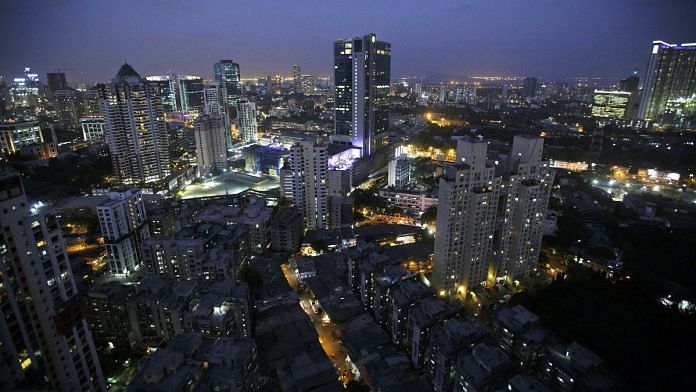India was just not ready to do business with the world. Until the 1990s, it had not done much to mint business-friendly laws. A vile nexus of neta (politicians), lala (businessmen) and babu (bureaucrats) would make quick and arbitrary policy changes that helped a few at the expense of a national economic strategy. They would be backed by jhola (media), baba (religious leaders) and judges. The gundas (henchmen) would ensure that there was no dissent. ‘Setting ho gaya’ was the way of doing business. To make matters worse, the same policies inadvertently led to the image of India being an exporter of poor-quality products. This was yet another branding disaster.
The ‘licence raj’ had closed the economy to global business. Socialist India hadn’t really competed on quality in any category. In the 1980s, the world was rushing to evolve passenger cars, competing to add innovative features to a new model every year. But India was in a parallel universe, content with the rarely changing, antiquated and ungainly Ambassador car. The joke was that everything in the Ambassador made a sound, except the horn.
Another example from the era is wristwatches. The world produced a range of watches from jewellery-like luxuries to cheaper yet trendy fashion wear. Once again, India betrayed its command-economy mind when it insisted on churning out utilitarian industrial designs from a machine tools manufacturer like HMT, not a fashion company. From cars and watches to just about everything was protected by the government, removing all incentives for innovation and progress.
One of the biggest blows to India’s image was delivered by businesses manipulating government rules: struggling with a balance of payments crisis, India had clamped down on the spending of foreign exchange. Consequently, import licenses were sold at a premium of as high as 700 per cent. But there was a catch. You had to export first to earn the right to use the import license. Just to tick that box, Indian companies exploited this arbitrage opportunity that came as a result of policy and began exporting products of questionable quality. They did not care about reputation, as long as they got the import licenses that they could further sell for a profit. As a result, India earned the notorious and dubious reputation of a nation that peddled poor-quality goods. The stigma prevailed well after the liberalization of the economy and haunted software companies for a long time.
I believe this was as much the doing of policymakers as of the Indian entrepreneurs. The government did not believe in self-regulation and often took decisions that gave them short-term control over situations instead of long-term gains for the ecosystem.
Also read: Harish Mehta’s book shows why NASSCOM is a catalyst in India’s start-up world. It’s a treat
NASSCOM realized early on that brand India Inc. was the real problem. We made it a crusade to change the India story. Slowly and determinedly, industry entrepreneurs and NASSCOM worked on the perceptions of our clients in the West. We kept looking for that big turning point in the narrative when a mention of India would evoke ‘technology destination’ as a synonym.
Oh, that turning point did arrive, and its place is secure in history. Thanks to the benefit of hindsight, how we did it is now apparent to us. Back then, we merely kept doing our work.
Today, an Indian engineer is respected more than an average engineer from the West. Some of us may take glory for granted. But none of it was accidental.
Also read: New book details untold story of how a ‘band of dreamers’ set up NASSCOM
Ask what you can do
Instead of waiting for the government to overhaul the India Inc. brand, we decided to start our own parallel agenda. This was going to be a long and arduous journey, and there was no time to be lost. Right from the start, it was a concerted effort. We had tasks marked out for everyone: NASSCOM as an organization, its member companies and even individuals.
We began looking for good things to say about ourselves. There were plenty.
Indian engineers were naturals at software development. Largely because of a culture that makes Indians read mathematics as if it were poetry. Mohandas Pai, erstwhile CFO of Infosys, is probably the epitome of this. He can run a large set of simultaneous equations in his head and cut and slice data in many different ways. He can talk about both macro and micro indicators at the drop of a hat. I remember, at a TiE Mumbai conference, a full house of more than 1,000 delegates gave him a standing ovation for his powerful speech. This was the first time I saw the audience cheering for a speaker like that.
Culturally, India is not a homogenous place. As a result, early in life, Indians develop the empathy needed to work with people from different backgrounds. You grow up learning how to decipher, decode and respond to the complex nuances of other Indians around you, who did not speak your mother tongue. This intangible quality was the biggest strength of Indians when it came to executing the ‘global delivery model’.
Middle-class values and the accompanying attitude were deeply embedded in Indian engineers. Almost all of them grow up coping with a shortage of almost everything around them. As a response, they develop a solution-oriented mind. Indian engineers also have the inherent advantage of being able to live with ambiguity and shifting goalposts.
We are thus more attuned to the changing management process, one of the cornerstones of the services business and the global delivery model.
Also read: Indian IT firms should eye $300 billion annual revenue, says Ashwini Vaishnaw
The other advantage that we offered was that Indians are trained from an early age to speak and think in English. This further added to our ability to service complex global requirements in the language spoken by businesses around the world.
On the upside, India was making stricter anti-piracy laws. The economy was opening up, and Indian talent was getting smarter while continuing to explode in numbers. Indian entrepreneurs had also begun exploring the English-speaking world.
There was plenty of good qualities all around. The challenge now was to corral these, string them into a story and sing it out to the world. And that’s what NASSCOM proceeded to do.
It takes colossal effort to change the image of an entire country, even if it’s in the minds of a select few. Bereft of resources, every brand-building idea had to be frugal. We worked on the optics first. As I mentioned earlier, we appended five slides to the start of every pitch presentation made by every member company. In those slides, we reinforced that India is the largest democracy in the world. We highlighted India’s rich heritage and its knowledge centres; about how an Indian called Aryabhata invented the zero. We also talked about the number of Indian engineering resources and the opportunity we presented as a market of over a billion people. These slides were so important that we offered them to every Indian software company, including those that were not NASSCOM members. All of them readily accepted our suggestion and used the slides in their presentations.
We also asked member companies to train their engineers abroad in the language of the brand messages we had crafted. Suddenly, thousands of engineers started quietly promoting India Inc. in harmony with what we were formally doing.
 This excerpt from Harish Mehta’s ‘The Maverick Effect: The Inside Story of India’s IT Revolution’ has been published with permission from HarperCollins India.
This excerpt from Harish Mehta’s ‘The Maverick Effect: The Inside Story of India’s IT Revolution’ has been published with permission from HarperCollins India.



